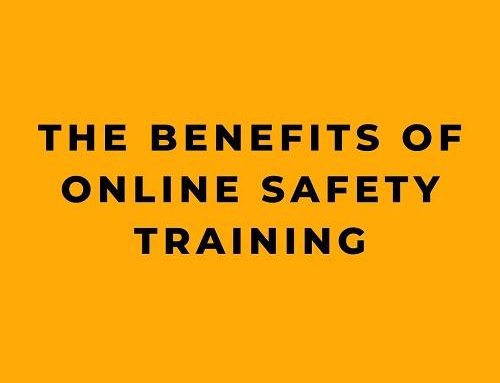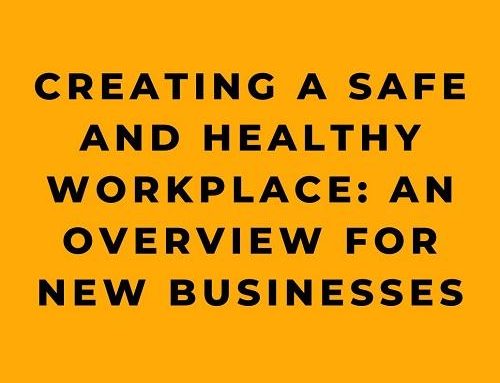As an employer, manager, or safety officer, you know it’s important to ensure the safety of all of your employees, especially when it comes to new hires. A new employee safety orientation is a critical step in ensuring the health and safety of your workforce.
According to the Occupational Safety and Health Administration (OSHA), and the Bureau of Labor Statistics (BLS), in 2019, there were over 2.8 million workplace injuries and illnesses reported. This statistic highlights the importance of workplace safety and the need for employers to take proactive steps to ensure the health and well-being of their employees. One such step is conducting a new employee safety orientation.
A new employee safety orientation is a critical step in ensuring the safety of your workforce. It provides new hires with the information and training they need to understand the safety policies and procedures of the company and to understand the specific hazards present in their workplace. By providing this information during orientation, new hires can understand how to avoid hazards and what to do in the event of an accident or emergency. This can help to reduce the risk of injuries and accidents in the workplace and create a safer work environment for all employees.
As we move forward in the article, we will dive deeper into the importance of a new employee safety orientation and the key items that should be included in such an orientation. Remember, safety is a shared responsibility, and it’s essential to involve all employees in the ongoing process of creating a safe and healthy work environment. By taking the time to invest in the safety of your workforce, you can not only reduce the risk of injuries and accidents in the workplace, but also improve employee morale and productivity.
Here’s a checklist of important items for general business to include in your new employee safety orientation:
- Explain company safety policies and procedures: It is important that new hires understand the safety policies and procedures of the company they are joining, as they are responsible for adhering to them and ensuring their own safety and the safety of their colleagues. This includes any specific safety protocols or procedures that are unique to their job or department. Providing new hires with this information will also help them understand how their role fits into the overall safety culture of the company.
- Provide information on emergency procedures: In the event of an emergency, it is essential that new hires know what to do and how to respond. This includes how to evacuate the building, where emergency exits are located, and how to contact emergency services. Providing this information during orientation will help new hires feel prepared and confident in the event of an emergency, which can reduce panic and improve the overall safety of the workplace.
- Discuss potential hazards: Every workplace has its own set of hazards, and it is essential that new hires are aware of the specific hazards present in their new workplace. This includes information about any chemicals, machinery, or other hazards that are specific to their job or department. By discussing these hazards, new hires can understand how to avoid them and what to do in the event of an accident or emergency.
- Provide training on the use of personal protective equipment: Personal protective equipment (PPE) is an essential part of many jobs, and it is important that new hires know how to use it properly. This includes information on how to wear, clean, and maintain PPE, as well as instructions on what type of PPE is required for their job. By providing this training, new hires can ensure their own safety and the safety of their colleagues.
- Demonstrate proper lifting techniques: Many jobs require lifting and carrying heavy items, which can lead to injuries if not done properly. By demonstrating proper lifting techniques during orientation, new hires can learn how to lift and carry heavy items safely and prevent injuries.
- Review emergency evacuation routes: It is important that new hires know how to evacuate the building in case of an emergency, and how to get to safety. Reviewing emergency evacuation routes during orientation can help new hires familiarize themselves with the layout of the building and the location of emergency exits, which can be beneficial in case of an emergency.
- Provide information on reporting injuries and incidents: It is important that new hires know how to report any injuries or incidents that occur on the job, and who to report them to. By providing this information during orientation, new hires can learn how to report incidents and injuries in a timely and efficient manner, which can help to prevent similar incidents from happening in the future.
- Encourage open communication: Creating a culture of safety in the workplace requires open communication between all employees. Encouraging new hires to speak up about safety concerns or issues can help to prevent accidents and incidents, and promote a safer work environment for everyone. By fostering an open and supportive environment, new hires will feel comfortable bringing up any concerns they may have, and management can address those concerns in a timely manner. This open communication can also help to identify and address any potential hazards, and can promote a culture of safety within the company.
In conclusion, a new employee safety orientation is an essential step in ensuring the safety and well-being of all employees. By providing new hires with the information and training they need to understand the safety policies and procedures of the company, and to understand the specific hazards present in their workplace, employers can help to create a safer work environment for everyone. By following this checklist, employers can ensure that all the essential topics are covered during a new employee safety orientation. Remember, safety is a shared responsibility, and it’s essential to involve all employees in the ongoing process of creating a safe and healthy work environment.
References:
1. https://www.bls.gov/news.release/archives/osh_11042020.pdf










